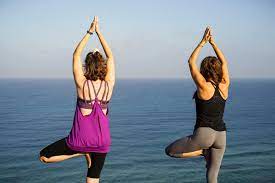New research from the Mayo Clinic suggests that balance may provide a more accurate measure of aging than strength or gait. The study, published in the journal PLOS ONE, found that the ability to stand on one leg is a more telltale sign of aging than changes in muscle strength or walking patterns.
As people age, their independence and well-being are largely influenced by three factors: balance, muscle strength, and an efficient gait. Monitoring how these factors change over time can help clinicians design programs to promote healthy aging. According to the researchers, individuals can improve their balance through simple exercises, without the need for specialized equipment.
In the study, 40 healthy adults over the age of 50 participated in tests assessing their walking, balance, grip strength, and knee strength. Half of the participants were younger than 65, while the other half were 65 or older. The tests included balancing on force plates in various conditions, such as standing on both feet with eyes open or closed, and standing on one leg.
The findings revealed that balance, particularly when standing on the non-dominant leg, showed the greatest decline with age. “Balance is crucial because it not only involves muscle strength but also input from vision, the vestibular system, and the somatosensory system,” explained Dr. Kenton Kaufman, senior author of the study and director of the Motion Analysis Laboratory at Mayo Clinic. He emphasized that poor balance significantly increases the risk of falls, a leading cause of injury among older adults.
In contrast to balance, the study found that grip and knee strength also declined with age but at a slower rate. Grip strength, in particular, decreased faster than knee strength and was a better predictor of aging than other strength measures. However, gait parameters—such as walking speed and pattern—remained unchanged across age groups when participants walked at their normal pace.
Notably, the study found no significant sex differences in balance, gait, or strength decline, indicating that both men and women are affected similarly by age-related changes.
Dr. Kaufman highlighted the importance of balance training, recommending simple exercises like standing on one leg. “If you can stand on one leg for 30 seconds, you’re doing well,” he noted. This daily practice can help maintain balance, muscle coordination, and vestibular responses, reducing the risk of falls.
The study underscores the value of regular balance training as a preventive measure in aging populations. As Dr. Kaufman put it, “If you don’t use it, you lose it. If you use it, you maintain it.”
The research adds to the growing body of evidence emphasizing balance as a key component of healthy aging and could influence future health programs aimed at improving balance in older adults.
More Information:
Asghar Rezaei et al, “Age-related changes in gait, balance, and strength parameters: A cross-sectional study,” PLOS ONE (2024). DOI: 10.1371/journal.pone.0310764.












